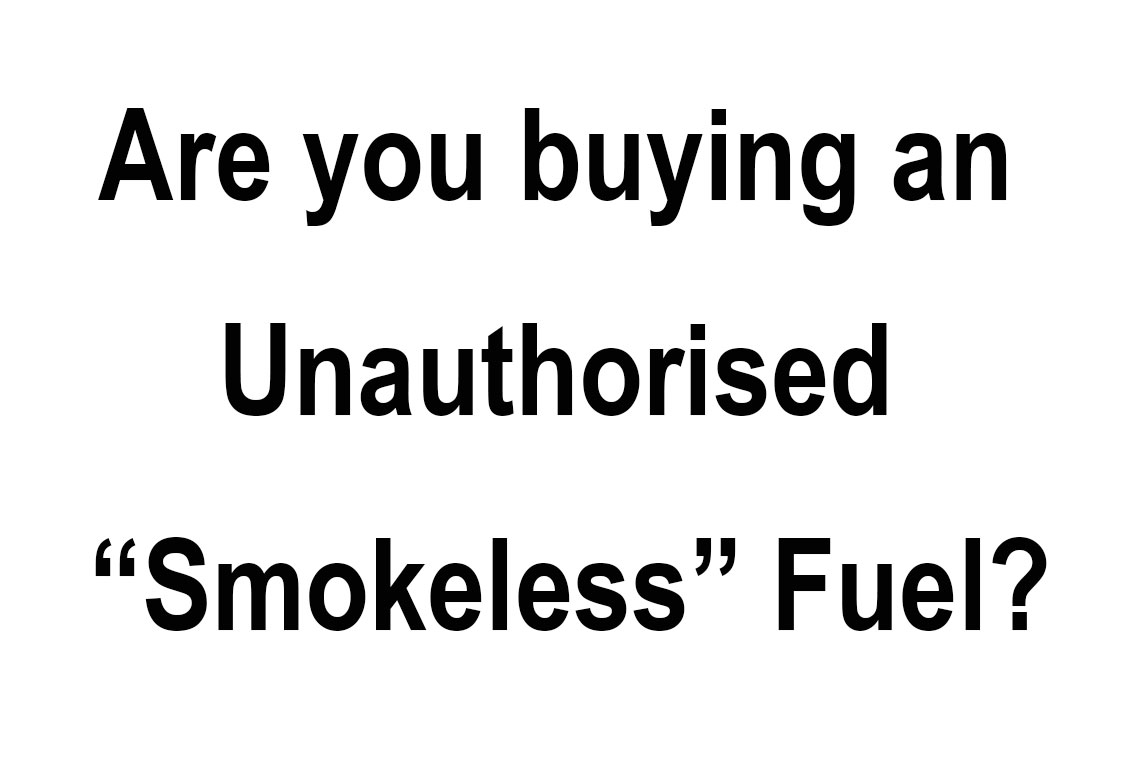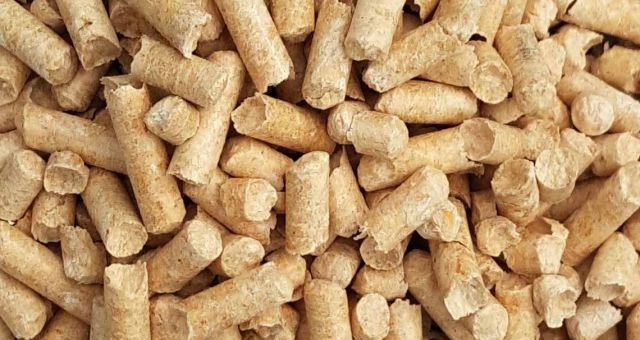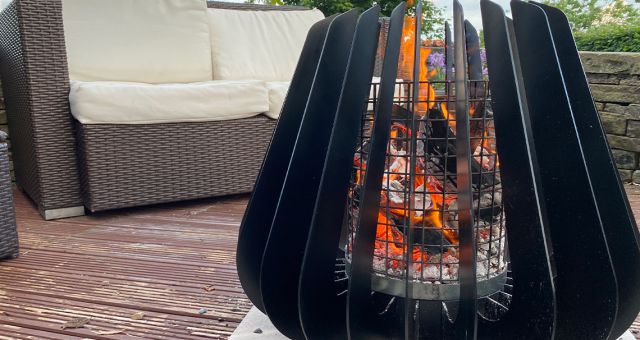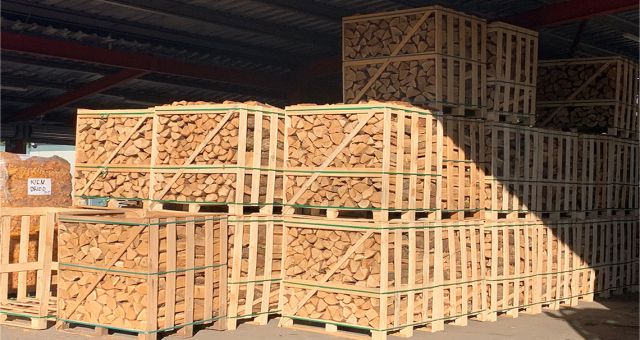The government is in the process of updating the current laws relating to the burning of solid fuel and wood-based products. In early January of this year, Michael Gove, the Environment Secretary outlined some of the changes that will be made to the Clean Air Act.
Smokeless Coals, and Smokeless Zones:
Most of the UK, with the exception of most rural areas, are under smoke control orders. This means that you are not permitted to emit smoke from a chimney, unless you’re burning an authorised smokeless fuel, or using an exempt appliance. Failure to comply with these rules can result in a fine up to £1000.
Typically, smokeless fuels are made with a combination of anthracite, petcoke, and low sulphur coal. These products combined with a binding agent form a smokeless briquette/oval. All smokeless fuels are tested by HETAS and once approved are listed on DEFRA’s website, on the authorised smokeless fuels list. The main criteria for a fuel to be authorised is that it has a sulphur content of less than 2% when burnt.
Although most of the UK’s cities and suburbs are subject to smoke control orders, many rural parts of the UK are not. Areas of the UK that are not subject to smoke control orders can legally burn all types of solid fuels.
CPL, Oxbow Coal, M&G Fuels and Hargreaves are the four remaining producers of briquettes in the UK. Each one of these manufacturers’ produces a range of authorised branded smokeless fuels, such as Homefire, Excel, Supertherm, Newheat and many others. But they also produce a high sulphur, non-smokeless briquette. The justification for producing these products is that they are intended for use in rural areas of the UK, and that they are more environmentally friendly, and cleaner to use than traditional house coal.
You may be surprised to learn that these producers use the same moulds to produce smokeless briquettes and their high sulphur, non-smokeless briquettes. This means that both products, to the untrained eye, look identical.
The government has significant evidence to show that these high sulphur briquettes have found their way into prohibited areas (smoke control zones). This has prompted us to write a blog article to inform people about non-smokeless briquettes. Furthermore, to inform how to be sure that your fuel is smokeless and authorised.
High Sulphur, Non-Smokeless Briquettes:
Unfortunately, within our industry, it is not uncommon for merchants to offer smokeless fuels without stating what the product in the bag is. DEFRA has strict rulings regarding the labelling of such products. However, due to the lack of enforcement, it has become common practice for some merchants to pre-pack or loose deliver products without correctly labelling what they are.
A pre-packed bag of smokeless fuel should state the weight when packed, details the packers name and address, and also the specific authorised fuel that is contained within that bag. This then allows you, the customer, to check that the product is listed on the approved smokeless fuels list.
It is simply not good enough to create a ‘smokeless’ brand name (for example: Wulfi, Economy Smokeless and others) without stating the name of the authorised fuel contained within the bag.
You can find a list of all the DEFRA approved smokeless fuels here:
https://smokecontrol.defra.gov.uk/fuels.php?country=england
If you cannot find the name of your fuel on this list, it is simply not an authorised smokeless fuel. Similarly, if your supplier packs their fuel into a branded ‘smokeless fuel’ bag, but cannot tell you the name of the fuel inside that bag, there is a significant chance that you are burning a non-smokeless unauthorised briquette. The law is quite clear, all smokeless fuels should be DEFRA approved.
Non-Smokeless Briquettes, Appearance, and Burning:
High sulphur, non-smokeless briquettes have similar burning qualities to their smokeless counterpart. Invariably, they have a high petcoke content. This conversely makes them burn very well, and is why they have become a very popular throughout the UK.
For example, Oxbow produces two non-smokeless briquettes called ‘Red’ and ‘Glow’, which burn and look very similar to Excel and Newheat. The non-smokeless products are made in the same moulds as their more expensive smokeless fuels; Excel and Newheat. Again, CPL makes ‘Wildfire’ and ‘Heat’, using the same moulds as there smokeless fuels. It is worth pointing out, it is significantly cheaper for a merchant to buy unauthorised fuels.
Although these high-sulphur, non-smokeless briquettes burn very well, they can be very damaging to your appliance and flue liner because the sulphur is very corrosive. These products, as you can imagine, are also bad for the environment.
If you are uncertain about the product that you are buying, it is best to refer to DEFRA’s authorised smokeless list. Again, if your ‘smokeless’ fuel isn’t listed on the link below, it is not a smokeless fuel.
https://smokecontrol.defra.gov.uk/fuels.php?country=england
Earlier last year, DEFRA launched two consultation papers with the view of taking evidence from the industry, including information from consumers, retailers and stove manufacturers. This information will help to form the basis for the proposed legislation of the new Clean Air Act. We believe this legislation will likely come into effect in 2019 – 2020.
Currently, we believe that it is likely that the government will phase out the sale of traditional house coal. Although we have no indication as of yet, we believe that it is highly likely, based on the information that we have received, that the sale of +2% (high sulphur, non-smokeless) briquettes will be banned. Until the legislation is enacted, we cannot say for sure as to when, and if this will happen. Nevertheless, we have produced this blog post to try and highlight to the consumer what they should look out for when purchasing solid fuels for domestic burning.
The government has indicated that up to 400,000 tones of unauthorised briquettes are currently being produced annually in the UK. When purchasing a fuel, it is the customers responsibility to buy smokeless fuels if living in a smoke control area, unless you have an exception, or an exempted appliance. However, if a customer buys from a merchant that doesn’t state the name of the product in the bag, how can you be sure what you are burning?
How to know that your fuel is an authorised smokeless:
As reiterated a couple of times previously in this post, the only way to be sure that you are burning a authorised smokeless fuel is to check that your product is listed on the government website.
Again, the link below details all of the fuels that are authorised smokeless fuels.




